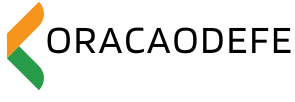Living with debt can be stressful, overwhelming, and even paralyzing. Whether it’s credit cards, student loans, personal loans, or medical bills, being in debt often feels like your money is controlling you, instead of the other way around.
But here’s the good news: you can break free. With smart strategies and a clear plan, you can pay off debt, regain control of your finances, and move toward a more secure, confident future. It doesn’t require a windfall—just consistency, discipline, and the right approach.
In this article, we’ll walk through effective debt repayment methods, tips to avoid common pitfalls, and how to rebuild your financial freedom step by step.
Why Paying Off Debt Should Be a Top Priority
Debt can quietly drain your income, limit your opportunities, and create long-term financial stress. According to a 2024 report by the Federal Reserve, the average American household with credit card debt owes over $6,000—and that’s not counting auto loans or student loans.
High-interest debt, especially from credit cards or payday loans, compounds quickly. The longer you wait to tackle it, the more it grows. Paying off debt allows you to:
-
Save on interest
-
Improve your credit score
-
Reduce financial anxiety
-
Increase your monthly cash flow
-
Invest in your future
Step 1: Know Exactly What You Owe
Before you can create a plan, you need a clear picture of your total debt. List all your debts with the following details:
-
Type of debt (e.g., credit card, student loan)
-
Balance owed
-
Interest rate
-
Minimum monthly payment
You can use a spreadsheet, budgeting app, or even pen and paper. Knowing the full scope of your debt gives you the clarity and motivation to take action.
Step 2: Choose a Debt Payoff Strategy That Works for You
There are two popular, proven methods to pay off debt effectively:
Debt Snowball Method
This approach focuses on paying off your smallest debt first, while making minimum payments on all others. Once the smallest is paid, you “roll” that payment into the next smallest debt.
Best for: Those who need motivation and small wins to stay encouraged.
Debt Avalanche Method
This method prioritizes the debt with the highest interest rate first, which mathematically saves you the most money over time.
Best for: Those focused on saving money and paying off debt faster overall.
Strategy Comparison Table
| Debt Strategy | Focus | Pros | Cons |
|---|---|---|---|
| Debt Snowball | Smallest balance first | Quick wins build momentum | Pays more in interest overall |
| Debt Avalanche | Highest interest rate first | Saves more money, faster debt payoff | May take longer to see progress |
Step 3: Make a Realistic, Flexible Budget
A budget helps you direct money toward your debt while maintaining basic needs. Start with essentials like rent, food, and utilities. Then assign a portion of your income to minimum debt payments—and whatever’s left, put toward the target debt (using your chosen method).
Cut back where you can: limit dining out, cancel unused subscriptions, or delay non-essential purchases. Every dollar you redirect accelerates your progress.
Step 4: Increase Your Income (Even Slightly)
If your budget is already tight, consider boosting your income. Here are practical ways:
-
Take on a part-time gig or freelance work
-
Sell unused items online
-
Rent out a spare room or driveway
-
Monetize a hobby or skill (like tutoring or graphic design)
Applying any extra earnings directly to your debt makes a big impact over time.
Step 5: Avoid Taking on New Debt
Paying off debt becomes much harder if you’re adding more. Avoid opening new credit accounts, using “buy now, pay later” apps, or co-signing loans for others. Stick to a cash or debit card system while you’re in repayment mode.
If you must use a credit card (for points or travel), only charge what you can pay off in full that month.
Step 6: Consider Debt Consolidation (If It Saves You Money)
If you have good credit, you may qualify for a debt consolidation loan or balance transfer credit card with a lower interest rate. This simplifies your payments and reduces interest costs.
Be cautious: consolidation doesn’t erase your debt—it reorganizes it. Avoid this option unless you’re committed to stopping the cycle of overspending.
Step 7: Celebrate Milestones
Debt repayment is a journey. Celebrate small wins—like paying off one card, hitting a new balance milestone, or going a full month without using credit. These moments keep you motivated and remind you how far you’ve come.
FAQs: Getting Out of Debt
What’s the best method for paying off multiple debts?
It depends. If you’re motivated by quick progress, try the snowball method. If you want to save the most money, go with the avalanche method.
How long will it take to become debt-free?
It varies. Use a free online debt payoff calculator to estimate based on your balances and payments. Most people can become debt-free within 2–5 years with a focused plan.
Should I stop saving while paying off debt?
Build a small emergency fund ($500–$1,000) first to avoid going back into debt. After that, focus on aggressive debt repayment while maintaining basic savings habits.
Is it okay to use a debt settlement company?
Debt settlement is risky—it can damage your credit, include high fees, and doesn’t guarantee results. Try budgeting, DIY payoff methods, or speaking with a certified credit counselor first.
Does paying off debt improve my credit score?
Yes. As you reduce your balances and maintain on-time payments, your credit utilization drops and your score improves over time.
Conclusion: Take Back Control, One Step at a Time
Paying off debt doesn’t have to feel impossible. With a clear plan, commitment, and smart strategies, you can eliminate what you owe—and regain your financial freedom.
Start by understanding your debt, choosing a payoff method that suits you, and budgeting with intention. Focus on progress, not perfection. Every dollar paid is a step closer to living debt-free and building a future where your money works for you—not against you.

